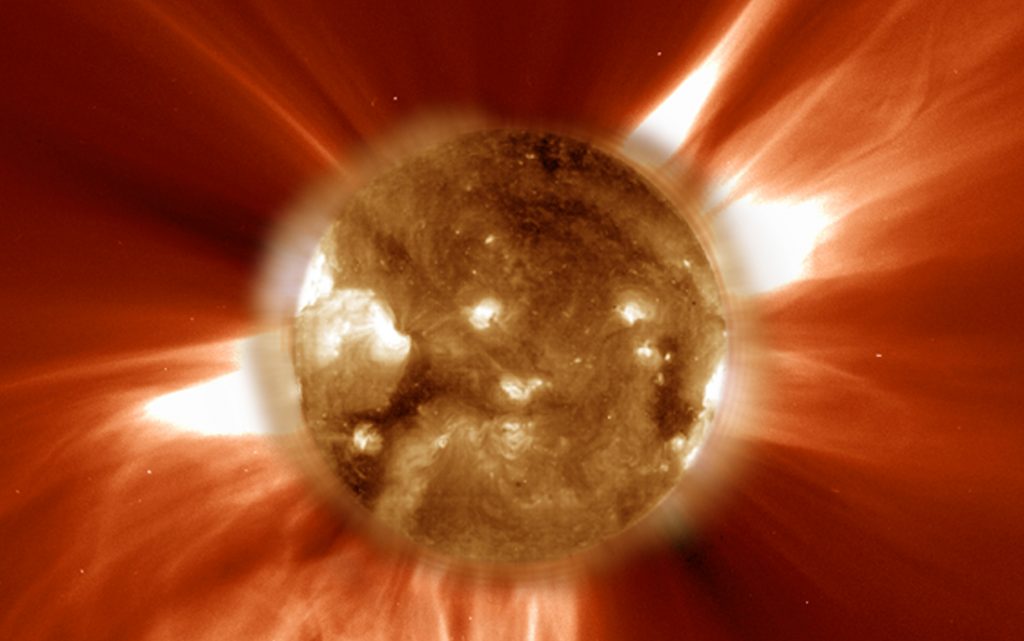
This ultraviolet image from the sun-orbiting SOHO spacecraft shows the sun during a solar storm.
Image: NASA/JPL
Written for the Airline Passenger Experience Association – APEX.aero
APEX Insight: The sun isn’t just a big, bright orb in the sky; it’s an active star, emitting all sorts of radiation and particles. A solar event might give us a beautiful Aurora, but it could also wreak havoc with ground-based power grids, radio, satellite communications, GPS navigation and even air traffic control operations.
There is weather in space. No, not like the weather in our atmosphere – not rain nor snow. Space weather begins at the sun, where our nearest star emits flares of electromagnetic radiation, energetic electrically-charged particles and plasma streams. The Earth’s magnetic field and atmosphere protects us from the major effects of space weather, but our technology on the ground and in space isn’t always as robust as we would hope.
There have been many instances of solar activity affecting our technological infrastructure. In March 1989, a severe geomagnetic storm struck Earth, and along with disruptions in satellite operations, the solar event triggered a nine-hour blackout in the Province of Quebec. In January 1994, Telesat Canada’s Anik E1 and E2 satellites were struck by high-speed solar wind that emanated from a coronal hole in the sun. The satellites went into uncontrolled spins, cutting off television and telephone service across Canada. Remarkably, Telesat’s engineering team was able to restore operations on both satellites. And, as recently as November of last year, Sweden experienced an outage of air traffic control radar, likely due to interference from a solar emission of electromagnetic waves.
Scientists are continually watching the sun, and countries around the world have space weather centers. In the United States, the National Oceanic and Atmospheric Administration’s Space Weather Prediction Center (SWPC) has a mandate to monitor and predict the space weather environment, and to provide forecasts, alerts and warnings around the globe. Terry Onsager, a physicist at the SWPC, explains, “the SWPC utilizes observations, computer models and forecaster expertise. We use ground-based and space-based measurements of the sun and the near-Earth space environment, together with computer models, to forecast space weather storms and to alert when hazardous conditions are occurring.”
Onsager says that major space weather storms can occur at any time, even during a weak solar cycle like the one the sun is currently experiencing. “We are now in the declining phase of the current 11-year cycle, which is the time when solar activity decreases from its maximum to minimum level within the cycle. Statistically, the declining phase of solar cycles is when the largest geomagnetic storms have occurred.”
As new technologies like connected aircraft and direct Internet satellites are developed, engineers utilize data from the SWPC to create designs that are resistant to the effects of solar events. Looking forward, Onsager says that the SWPC’s role will only increase. “New satellite systems are constantly being developed, new uses for high-accuracy navigation are being adopted and today’s commercial aviation will eventually expand to include commercial space transportation, filling the gap between today’s airline passengers and today’s astronauts. As technologies evolve, so will the needs for space weather services. An important challenge for space weather services is not just to focus on providing the best services for customers today, but to anticipate the growing needs of tomorrow.”